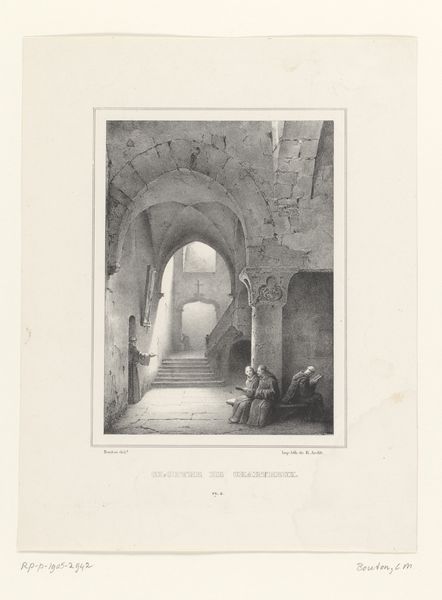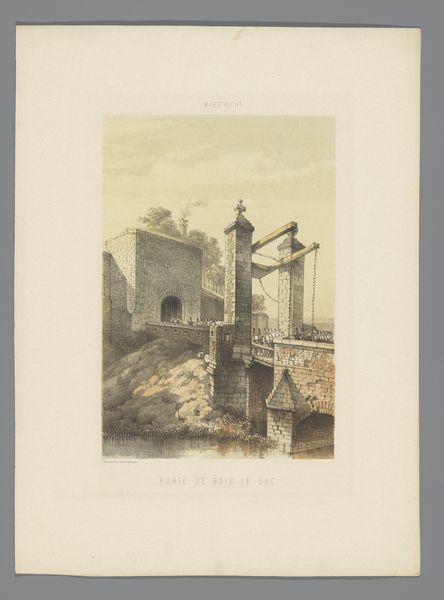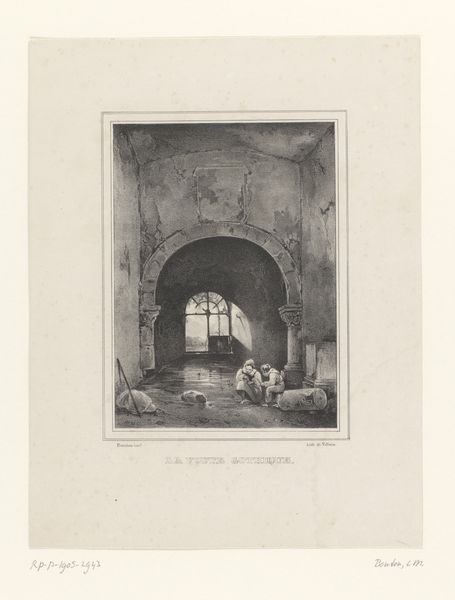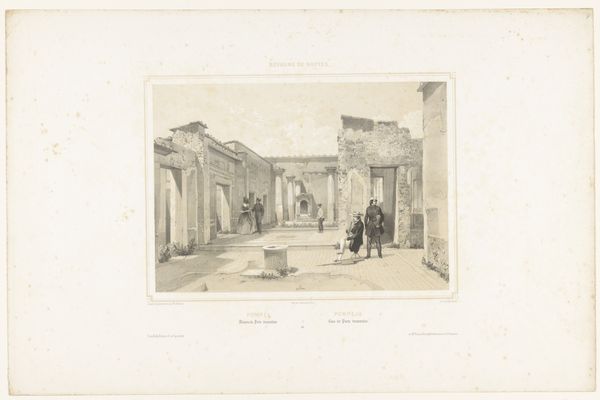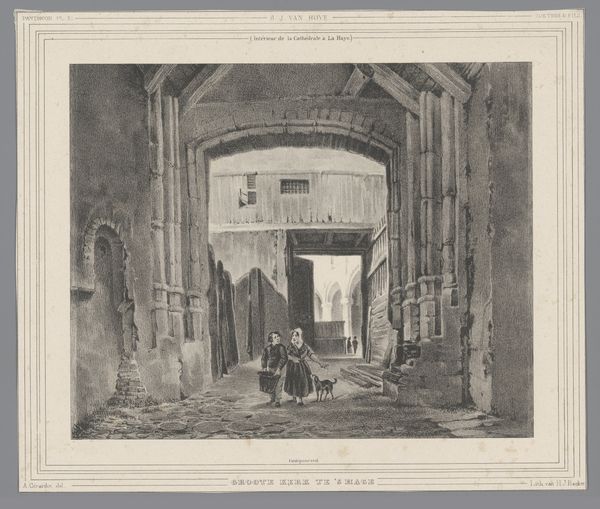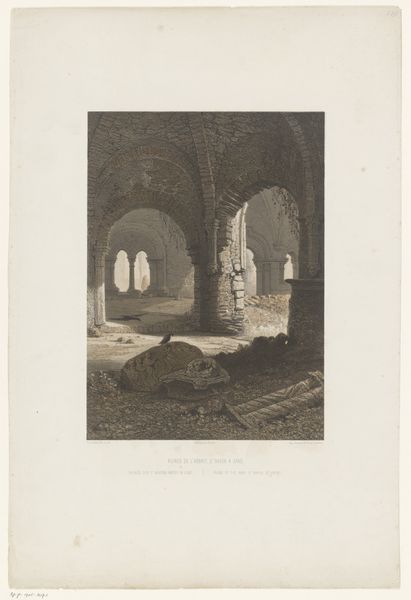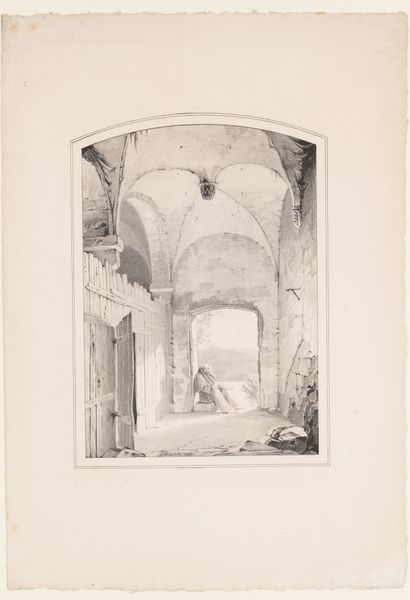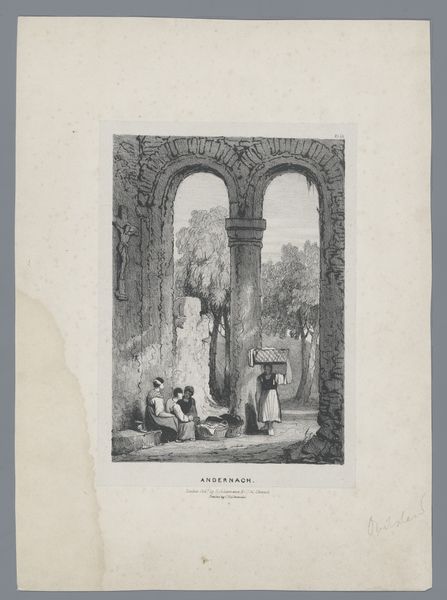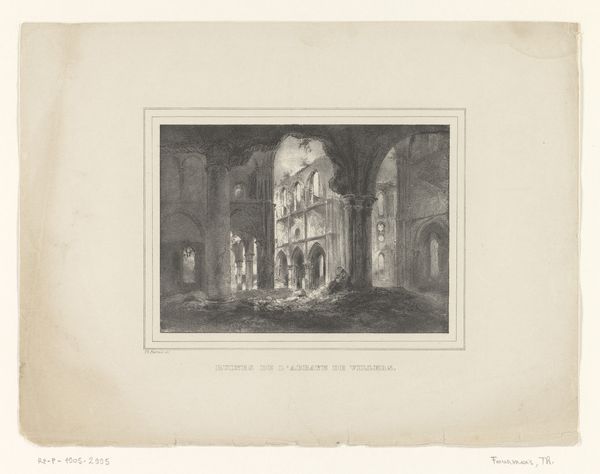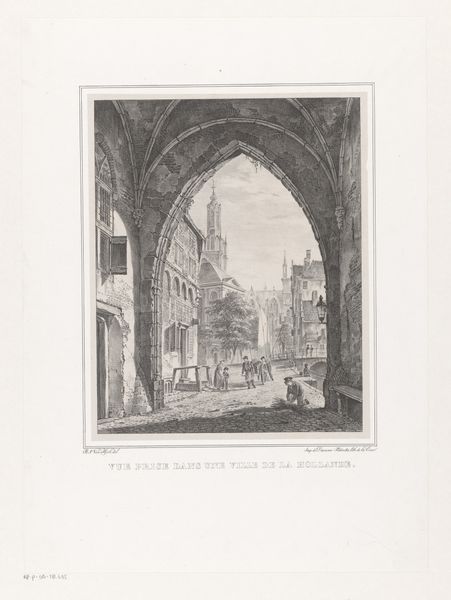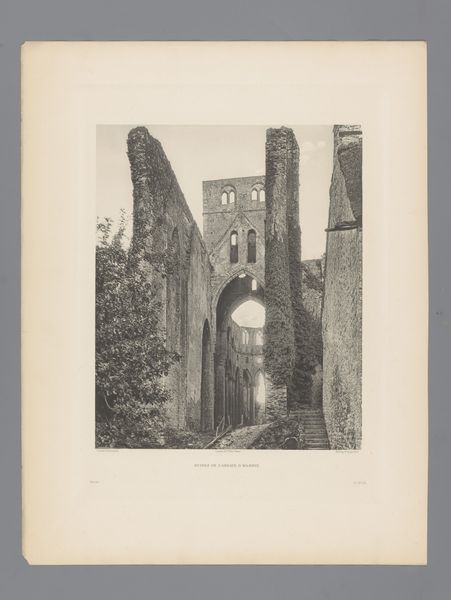
drawing, paper, pen
#
drawing
#
landscape
#
figuration
#
paper
#
romanticism
#
pen
#
cityscape
#
history-painting
#
realism
Dimensions: height 300 mm, width 235 mm
Copyright: Rijks Museum: Open Domain
Curator: This 1832 pen drawing by Charles Marie Bouton is titled, "Two Women in the Ruins of an Ancient Bathhouse." Editor: My first impression is melancholy. The delicate pen strokes create a scene of decay, but there's something almost serene about the women in this ruined space. Curator: Absolutely, the romantic style lends itself to such a feeling, highlighting a bygone era, a historical yearning perhaps. Think about the symbolism: ruins often represent the transient nature of power and beauty, inviting us to reflect on history's lessons. Editor: Right, and you can see that materially. The drawing on paper emphasizes the artist's deliberate process in capturing this particular subject, in that moment. How different the effect might be with other media. This is a pretty straightforward rendering of a ruin... Were architectural drawing skills prized in the 19th century? Was paper or pigment production influencing artmaking at the time? Curator: I imagine architectural renderings would require acute training, yes, to deliver clear representational communication. Note that Bouton situates the women in this space to provoke thought about temporality— perhaps alluding to how the human figure relates to overarching notions of civilizational rise and decline, ruin, decay. They’re seated right there on the cool floor...witnesses to history. Editor: Interesting, I wonder then what the everyday reality of those women looks like juxtaposed to the ruins that surround them. Is this a realistic portrayal of that contrast or an idealized vision from the artist, or for the intended consumer? The stark black lines against the white of the paper give me a clear view of how the architecture is actually built, the work put into the structure, which is very helpful for considering labor questions... Curator: Precisely! And Bouton, working in pen and ink, is drawing on centuries of associations between ruin imagery and morality, decline and perhaps a hope of rebirth—a symbol meant to move you, change you! Editor: I appreciate how it pushes me to look more critically at both the beauty and the construction, literally, of historical narratives and its reflection on those experiencing its decay and present in it. Curator: I'm leaving with a sense of quietude that’s so affecting, as it draws into contemplation on civilization itself, and how humans interact with these crumbling, weighty, spaces.
Comments
No comments
Be the first to comment and join the conversation on the ultimate creative platform.
